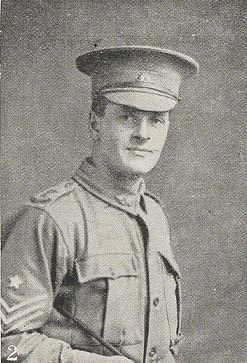View entry
Name: SOUTHON, Ronald Dudley (Major)

Nee: bro of Charles Edward Southon (same farm)
Birth Date: 3 Dec 1890 Agra, Uttar Pradesh, India
Death Date: 19 Jan 1968 Mombasa
First Date: 1925
Profession: Farmer, mining engineer
Area: Farm 1458, Sonamerg Estate, Songhor, 1930 Nakuru, 1923 Waterfalls Estate Nakuru, Mombasa
Married: 1. In Glenelg, S. Australia 1919 Florence Ida 'Fluffy' Kernot b. 9 Oct 1898 Huddleston, S. Australia, d. 20 Jan 1948 Kenya; 2. In Nakuru 31 Dec 1948 Madge Carpenter née Tinney b. 24 Aug 1918 Gloucester, d. 26/27 Aug 1986 Knysna, S. Africa (formerly m. Andrew Wingate Carpenter 1908-1998 and later m. Charles Hillyar 1905-1995)
Children: 1. John Michael (1921 Kenya-18 Sep 1982 Perth, W. Australia); Kenneth Ronald (18 Dec 1932 Mombasa-16 Aug 2008 Perth, W. Australia)
Book Reference: Red 25, Red 31, Hut, Red 22, Rift Valley
War Service: Australian Imperial Force
School: Adelaide Univ.
General Information:
‘For conspicuous gallantry and devotion to duty. He went through a heavily shelled area to the front line after many runners had become casualties and telephonic communication was impossible, visited all the companies and returned with his information to battalion headquarters, entailing a walk of over two miles in the height of the bombardment.’ (Commonwealth of Australia Gazette, No.137 dated 30th August 1918).
His faulty lung he owed to having given his gas mask to a dying man. He was Adjutant to General Freyburg, the fiery New Zealander who was noted for his disregard for danger and delight in difficult situations.
During a spell of leave in Britain, he bought an engagement ring and sent it to his boss’s daughter Fluff whom he had been wooing for some time. His duties with the AIF terminated on 31st October 1919 and he married her. C. 1907/08 Charles, Ron’s eldest brother, who was a Colonel in the Indian Medical Corps, was charged by a Rajah to charter a ship, staff it with nurses, surgeons and medical men, up-to-date equipment and set up a hospital in Nairobi. He and his wife set sail for Kenya and established what became the Military Hospital on Slater’s Road. Enchanted by the country, he bought two thousand acres of land ‘for a song’ at Mteiti, the top end of the Songhor Valley. Having been discharged from his duties, he returned to Kenya in 1919 and asked Ron to come and help run the farm. Ron accepted, and he and Fluff started their strange new life in the wilds establishing survey pegs, boundaries, and ploughing with oxen. A grass house was built. Tables were made from packing cases. An employee walked twenty odd miles every month to the nearest train station to collect the wages in cash and returned, unmolested, with the chest on his head. Stories of leopard lurking in darkened barns, lion, witchcraft, superstitions, crops of onions stolen, the purchase of the first purebred Shorthorn bull, the planting of the first forty acres of coffee. Michael was born and, at a tender age got malaria. Ron rode on a mule holding the child before him for over thirty miles to hospital.
The farm did not prove a viable proposition for the two families. Besides, Fluff was bored in this unpeopled area, and she and Nan were not the best of friends. Ron left to work on other farms. Fourteen years after Michael’s birth, came Ken. Ron bought ‘Windmill Cottage’ from one Dick Hansard, relation of parliamentary fame. Much renovation had to be done, so he obtained a job with the Kenya Farmers’ Association.
When Ken was about seven or eight years old, Fluff decided she was not born for the rough life, and left him. Ron filled his days working with the KFA, mainly on the pyrethrum and passion fruit projects but also as ‘General Secretary’. Always gentle, kind, tolerant and loving, fearless morally and physically, Ron was a nobleman, liked and respected by his many men friends, loved by the ladies.
